
Kohshin Finley’s portraiture offers a pinhole glimpse into his world. Family members and friends rendered in shadowy, stirring greyscale hold the viewer’s gaze. These monumental yet intimate close-ups of loved ones have earned Finley considerable acclaim: his work has appeared in group shows at Jeffrey Deitch and the California African American Museum and one of his portraits was acquired last year by the Los Angeles County Museum of Art. “It’s wonderful to have a place nearby that you can traverse through history in such a way,” the Los Angeles native says of his childhood pilgrimages to LACMA. “To have a portrait of my friends be added to that chain of history is a beautiful thing.”
Now, the 34-year-old artist is making his international debut with a solo show at Barbati in Venice, which opened on Sept. 9. “Hummingbird” features an array of new portraits and doubles as a chance for Finley to publicly display a rediscovered passion: ceramics. The artist’s pottery, lathered in layers of paint, celebrates the rawness of material, maintaining the intimacy that Finley strives for in his paintings. To mark the opening of “Hummingbird,” Finley sat down with CULTURED for a conversation about process, branching into new mediums, and going “full sponge.”
CULTURED: You’re a Los Angeles native and your work was recently acquired by LACMA. Did you go to the museum growing up? How does it feel to be a pillar of the LA art scene now?
Kohshin Finley: I’m humbled to be thought of as a pillar in the art scene here. Los Angeles is more than just my home—it’s where I garnered most of my inspiration and determination. My visits to LACMA growing up informed parts of my practice on an energetic level. To be able to see a vessel from 1500 B.C., then walk a few steps and see a Picasso painting, is simply incredible.
CULTURED: What did you surround yourself with in preparation for this show?
Finley: This year I’ve deepened my relationships with a lot of my friends and family. They have been a large part of what has kept me going as I prepared for this show. At the beginning of the year, I took a few months off from painting to fully invest in my craft as a ceramicist. The medium went from a hobby to one of the most enthralling experiences—which I truly believe the universe led me to.
I’ve met some wonderful people along the way who have welcomed me into the LA ceramics community. I went full sponge and soaked up as much information as possible. It is those conversations that have made an impression on the clay that is seen in this Venice exhibition.
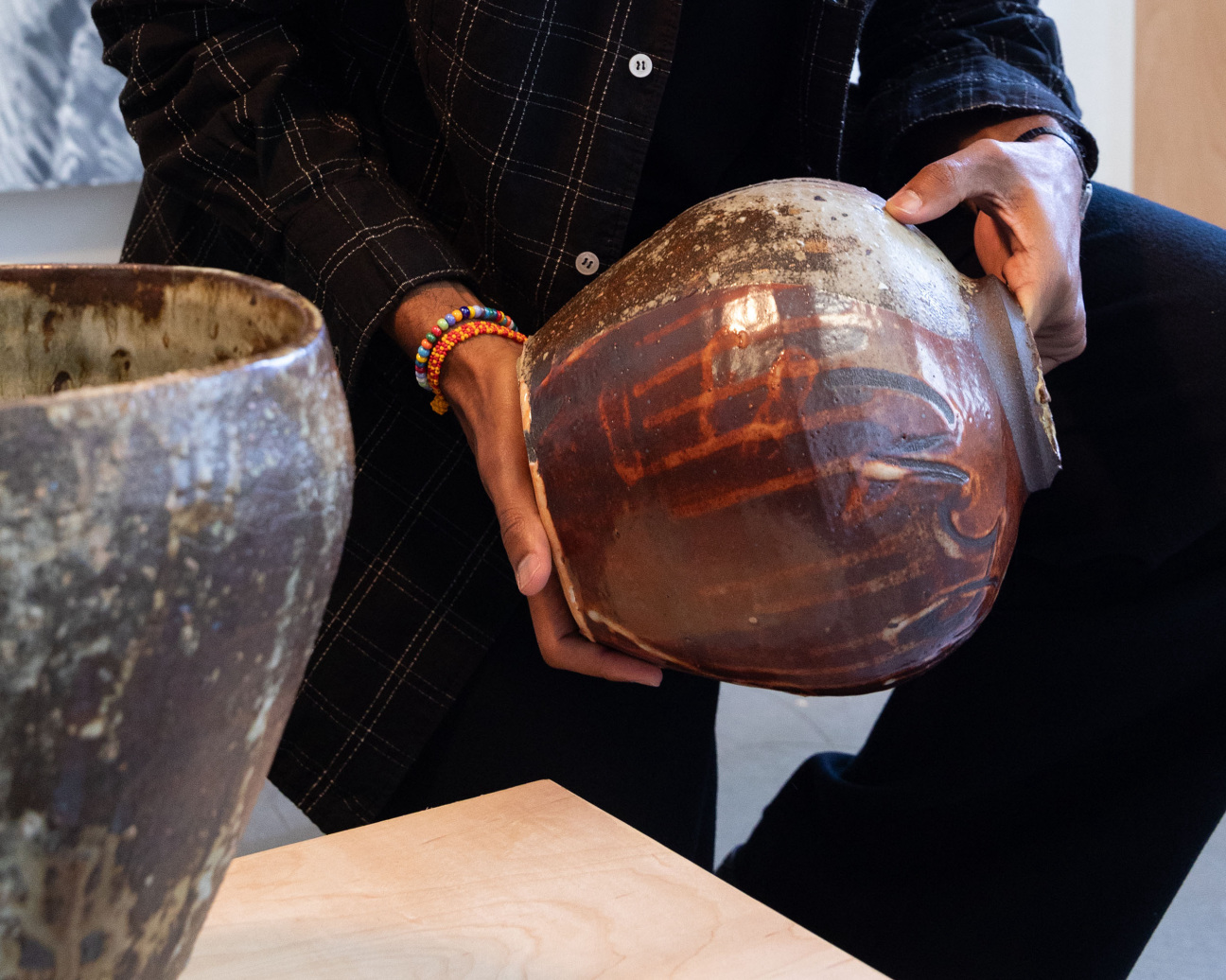
CULTURED: The paintings in the show feature your friends and family. How do you prepare your sitters before you paint them? What do those conversations look like?
Finley: Some of the images started with getting a matcha with a friend and taking a walk around the block. Some began with me doing studio visits, having my camera on me, and capturing the light on [my subjects]. My process is much more about my own preparation as opposed to preparing them. I might do a meditation, breath work, or listen to music to ground me in that moment. I do my best to be present with the person in front of me.
CULTURED: You have said that you started making ceramics to tell stories differently than you do in your paintings. What do you mean by that?
Finley: I started ceramics in middle school. It’s been an anchor for me even without practicing daily. Painting is a world that some people haven’t felt invited into; they are often told to step back and respect a painting. Ceramics, on the other hand, offers a more approachable entry point. They are traditionally meant to be held, touched, and used.
Communicating through these very different vocabularies really excites me. This year felt like the right time to bring the long history of ceramics into my practice. After my last show, my wife surprised me with a ceramics lesson and I was hooked all over again. I saw the thread of inspiration and I just kept pulling at it to see where it went. My practice feels very balanced now.
CULTURED: How have these distinct practices informed each other over time?
Finley: For the majority of my professional career, I’ve only created flat images via painting and photography. Creating forms with volume was a bit nerve-racking but once I leaned into it fully, I never looked back. I connected with my friends Liz Navarro and Jotham Hung to teach me how to coil-build and throw on the wheel. After spending months with them I went back to painting and my work became much more open and transparent.
Every part of the process of the paintings is now viewable: from the gesso and the loose sketch of the underdrawing to the oil-painted marks. There was an urgency to capture the energy of a person in an expressive manner, rather than paint an image of them. When you open up a bag of clay and set up, you only have so much open time before it goes brittle, so you have to be very purposeful in each action. As I caught my rhythm within the process of making, I would make one painting, then a vessel, then sometimes two paintings, then two vessels. Inspiration created more inspiration, momentum turned into more momentum.
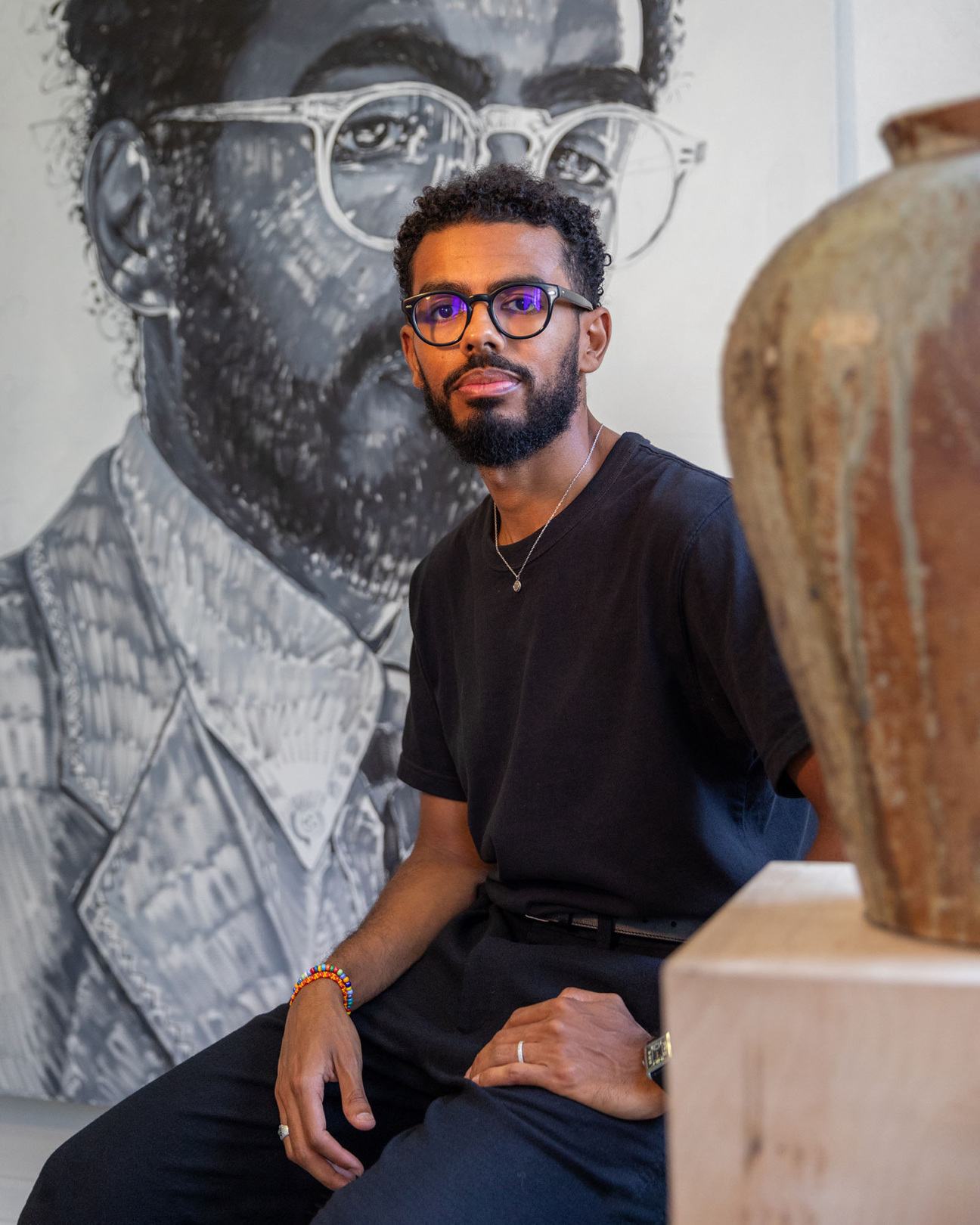
CULTURED: Your exhibition will be taking place at the same time as the Venice Film Festival and Architecture Biennale. What are you most excited about in that convergence?
Finley: Both the Film Festival and the Biennale carry exceptional legacies, so to have my practice be in conversation alongside them is pretty special. Last time I visited Venice, it was also during the Film Festival and Biennale; it was a trip that deeply transformed my approach to creating art. It’s impactful to have this full circle moment, coming back to Venice a few years later and reveling in the magic that inspired me years ago.
CULTURED: You say that the ceramics appear in the show “as if they’ve always existed.” Can you talk about your relationship to permanence?
Finley: I think of history as a chain, and what I’m doing is adding links to that chain. Everything I’m doing is grounded in something that has existed long before me. My ceramic vessels reference a multitude of histories including my own. I’m interested in making something that feels like me in 2023 but that could also have been pulled from another time entirely.
I’m always struck by the historical depth of the collections at places like the Getty, the Met, and Gallerie dell'Accademia in Venice. To see art and objects that have been preserved shows how important storytelling is and always makes me want to get back into the studio.
CULTURED: What are you excited for this fall?
Finley: I’m excited to celebrate life and all that it's brought to me and those I care about. I’ll be looking forward to enjoying the sun in Italy and bringing some of it back home with me.
"Hummingbird" is on view through October 29, 2023 at Barbati in Venice.

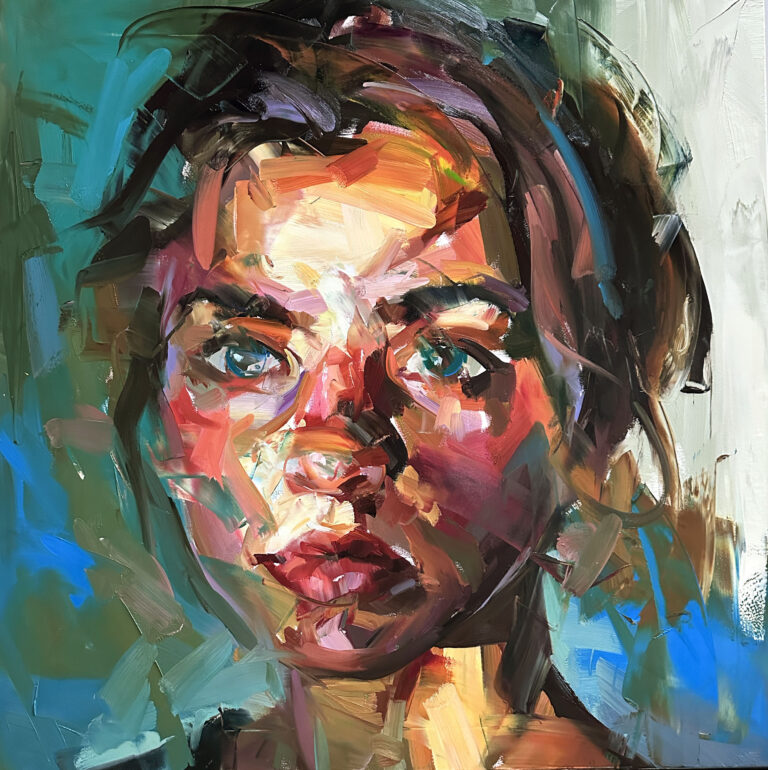


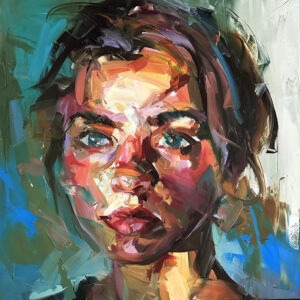
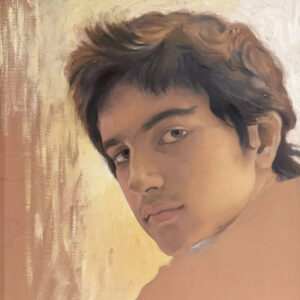




 in your life?
in your life?

